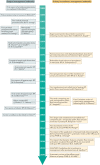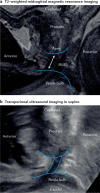Preoperative exercise interventions to optimize continence outcomes following radical prostatectomy
- PMID: 33833445
- PMCID: PMC8030653
- DOI: 10.1038/s41585-021-00445-5
Preoperative exercise interventions to optimize continence outcomes following radical prostatectomy
Abstract
Urinary incontinence is a common and predictable consequence among men with localized prostate cancer who have undergone radical prostatectomy. Despite advances in the surgical technique, urinary continence recovery time remains variable. A range of surgical and patient-related risk factors contributing to urinary incontinence after radical prostatectomy have been described, including age, BMI, membranous urethral length and urethral sphincter insufficiency. Physical activity interventions incorporating aerobic exercise, resistance training and pelvic floor muscle training programmes can positively influence the return to continence in men after radical prostatectomy. Traditional approaches to improving urinary continence after radical prostatectomy have typically focused on interventions delivered during the postoperative period (rehabilitation). However, the limited efficacy of these postoperative approaches has led to a shift from the traditional reactive model of care to more comprehensive interventions incorporating exercise-based programmes that begin in the preoperative period (prehabilitation) and continue after surgery. Comprehensive prehabilitation interventions include appropriately prescribed aerobic exercise, resistance training and specific pelvic floor muscle instruction and exercise training programmes. Transperineal ultrasonography is a non-invasive and validated method for the visualization of the action of the pelvic floor musculature, providing real-time visual biofeedback to the patient during specific pelvic floor muscle instruction and training. Importantly, the waiting time before surgery can be used for the delivery of comprehensive prehabilitation exercise-based interventions to increase patient preparedness in the lead-up to surgery and optimize continence and health-related quality-of-life outcomes following radical prostatectomy.
Conflict of interest statement
O.A. is an advisor to Ezra A.I. (unrelated to this Review). M.I.P. has received an honorarium from advisory board work for Astellas, Ferring, Janssen and AstraZeneca (unrelated to this Review). The other authors declare no competing interests.
Figures





References
Publication types
MeSH terms
Grants and funding
LinkOut - more resources
Full Text Sources
Other Literature Sources
Medical

